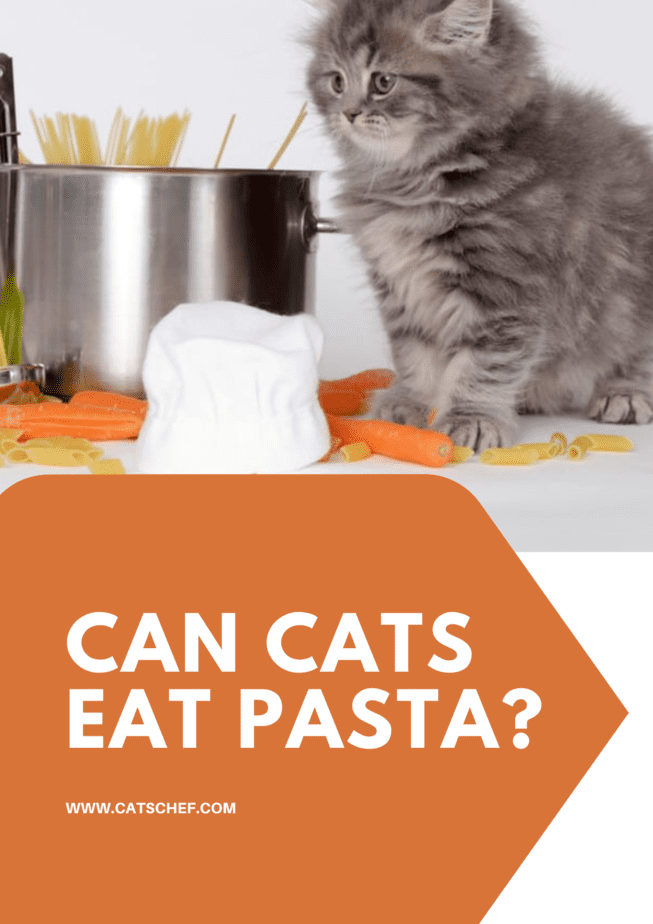Pasta is one of those foods that can look like both a gourmet and an I-don’t-care type of meal. Of course, we love foods that are easy to prepare, but we also love going to fancy dinners and feeling special. Can cats eat pasta so we know to let them join next time?
Finding pet-friendly places may be the least of your worry. Sneaking in a cat or two shouldn’t be a problem, but when her hungry tummy rumbles, what are you going to go? There’s no cat food around and you’re not sure if cats can eat pasta.
Rest assured because we’re here to explain all the pros and cons of feeding your cat pasta. We’re going to break it down for you and then you’ll know whether your kitto may dine with you.
Can cats eat pasta without any consequneces?
We’ve yet to hear any cases of pasta attacking felines… Jokes aside, some human foods can be harmful to cats because their bellies aren’t made the same way as ours. Felines are carnivores – they must eat meat.
A carnivorous system is dependent upon animal-derived protein. Pasta is, unfortunately, devoid of protein. On the contrary, it’s packed with carbohydrates that, in contrast to protein, don’t find their place in a cat’s body.
How much pasta can cats eat?
Due to the fact that pasta doesn’t have any nutritional value to cats, the amounts should be limited. Consisting of grains, water, and eggs, pasta isn’t harmful on its own.
Grains aren’t very nutritious to cats, so at best they serve as fillers. You can find all sorts of grains in commercial cat foods because they’re cheaper than meat. However, they can offer some benefits to pets.
They’re rich in fiber, which is good for your cat’s digestive health. Grains can help if your pet is feeling constipated. Just don’t overdo it – too much fiber could cause the opposite effect, and no one wants to clean up after a mean case of the runs.
Grains are unfortunately also known to be one of the most common feline allergens. If your pet has a grain allergy, it’s best to look up some alternatives to grain foods, such as tapioca.
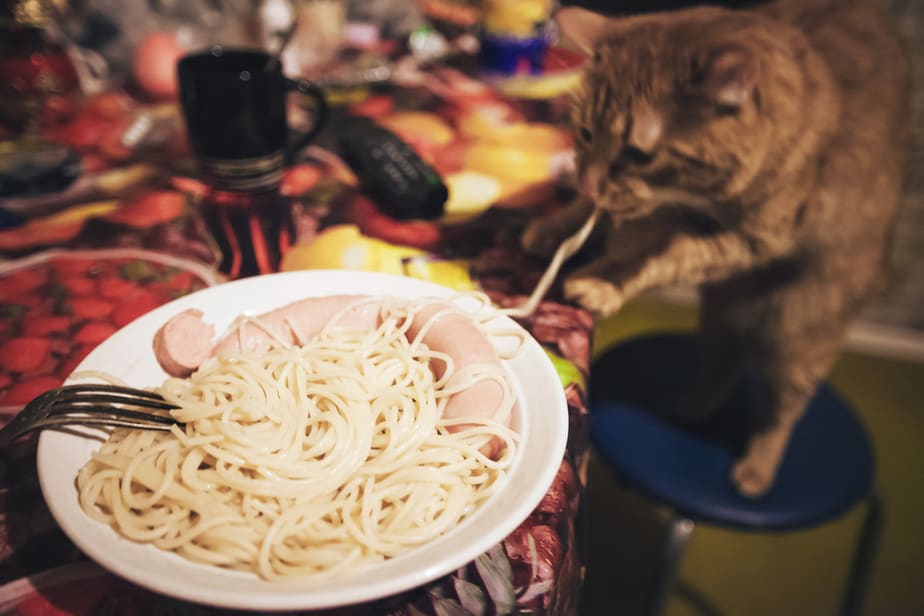
Why is pasta bad for cats?
The odd bite of mac and cheese or slurp of spaghetti isn’t likely to cause immediate harm to your kitto. However, continuous intake of pasta can lead to some undesirable effects.
Pasta is nothing but a load of carbs and calories. It’s considered empty calories for cats because of the lack of protein. If your pet is fond of pasta, it could be an issue. Excessive amounts mean high-calorie and high-carb content.
Carbohydrates are an unnecessary nutrient in the feline world. They can serve as a source of energy, but they’re useless compared to protein and healthy fats. Therefore, extra carbs could mess with your cat’s health.
She’ll probably have trouble digesting the pasta, which can lead to gastrointestinal issues. She may experience abdominal pain, vomiting, diarrhea, and/or constipation.
Next to carbs, calories can easily become your cat’s enemy. Felines require a certain number of calories daily. However, just as is the case with carbs, overdoing it can cause harm.
Foods that are abundant in calories, such as pasta, whipped cream, and others, shouldn’t become the norm in your cat’s diet. It will result in a higher body fat percentage, which is a recipe for unhealthy weight gain.
Any cat would find this to be an unfavorable situation. Obesity can increase your pet’s risk of developing heart disease and cancer.
Furthermore, a high-calorie diet increases the risk of developing type 2 diabetes. Felines, like humans, can also develop depression as a result of being overweight. This can have an impact on their daily routine as well as overall life quality.
What about fats?
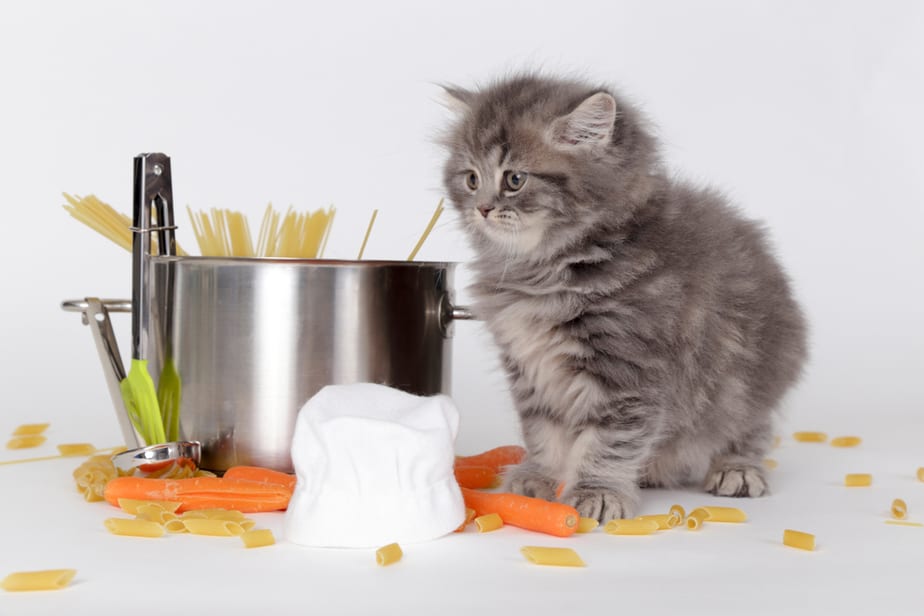
Pasta is also heavy in fats. Fat is required for your pet’s diet, therefore this is likely to stimulate her senses. However, pasta also contains unhealthy fats, which your pet should avoid as much as possible.
Natural fats in meat and several other fresh foods provide your cat with plenty of energy. Pasta, on the other hand, is high in saturated fats, which aren’t a cat’s best buddy.
Because they boost dangerous cholesterol levels in the blood, saturated fats have been linked to an increased risk of heart disease and stroke. If you want to keep your cat healthy and fit, avoid foods high in saturated fats, like butter.
How to prepare pasta for cats?
If you decide to share some of your pasta with your furry friend, make sure you know the best ways to prepare it. For cats, the best and safest way for cats to eat some of this Italian staple is boiled and plain.
Raw pasta isn’t good for cats as they can’t digest it. Not to mention its texture is harder and therefore more difficult to chew on and digest. Besides, some of the dried pasta pieces are bigger in size and if your cat tries to swallow some of it, she could find herself in trouble.
Raw foods can easily become a choking hazard, especially if your pet is known for her foraging skills. If she somehow manages to swallow whole macaroni or other types of pasta, it’s possible to cause obstruction.
Therefore, boiling pasta is a necessary step when it comes to feeding your furball.
1. No spices!
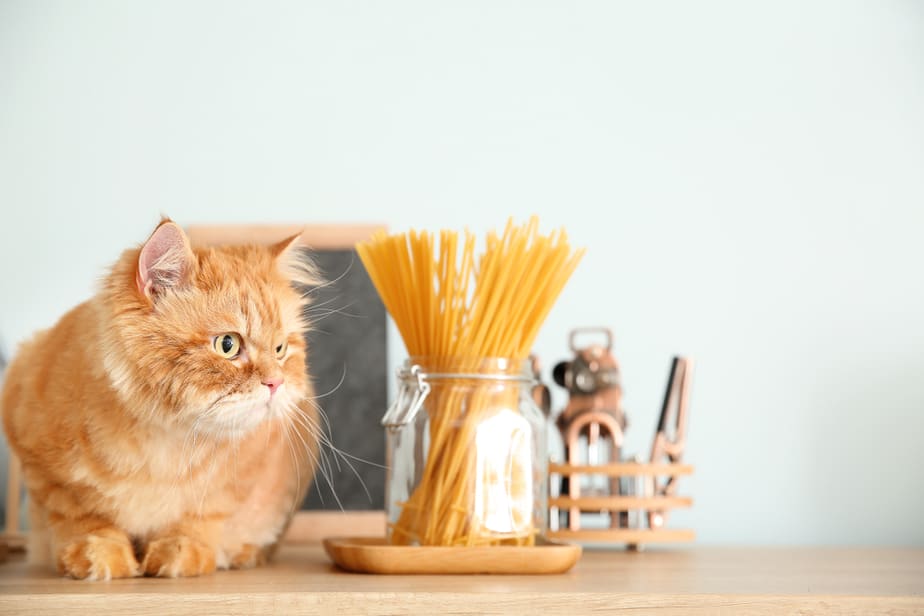
Ah, the second, all-important element in our pasta preparation!
However, spices can be dangerous to felines. Spices like salt, black pepper, garlic, and other seasonings present in human cuisine can be harmful to a cat’s health.
Excessive salt consumption, for example, can result in sodium toxicity. Felines require modest amounts of sodium to survive, but more than a teaspoon a day is highly dangerous.
Black pepper, which is also used as a cat repellent, isn’t entirely safe for feline consumption. Fortunately, its pungent odor repels cats, so you don’t have to worry about her willingly eating it.
To play it on the safe side, always prepare the pasta without these ingredients and then add them later to your plate. That way, you and your pet can both enjoy some spaghetti.
Garlic is highly poisonous to cats, so keep it away from them at all costs. Your pet will lose red blood cells if she eats garlic, onions, chives, or other members of the Allium family.
This could lead to anemia, which could be fatal. As a result, use only a pinch of salt and a pinch of black pepper – and no garlic!
2. What about sauces?
Sauces and various condiments are game-changers for us humans. When you cook some plain pasta, you can’t help but notice the lack of sauce. It changes the dish’s whole perspective in terms of flavor, aroma, and appearance.
Sauces and condiments like ketchup are described as a must in most households. However, just because these are staples, it doesn’t mean the same applies to cats. You may not be able to eat plain pasta without any sauce, but that’s a cat’s only option.
Can cats eat pasta with sauce? Unfortunately, the answer is no. For example, ranch sauce contains ingredients such as buttermilk, mustard, salt, garlic, onions, herbs, and more. None of these ingredients are good for your cat’s tummy and can cause problems.
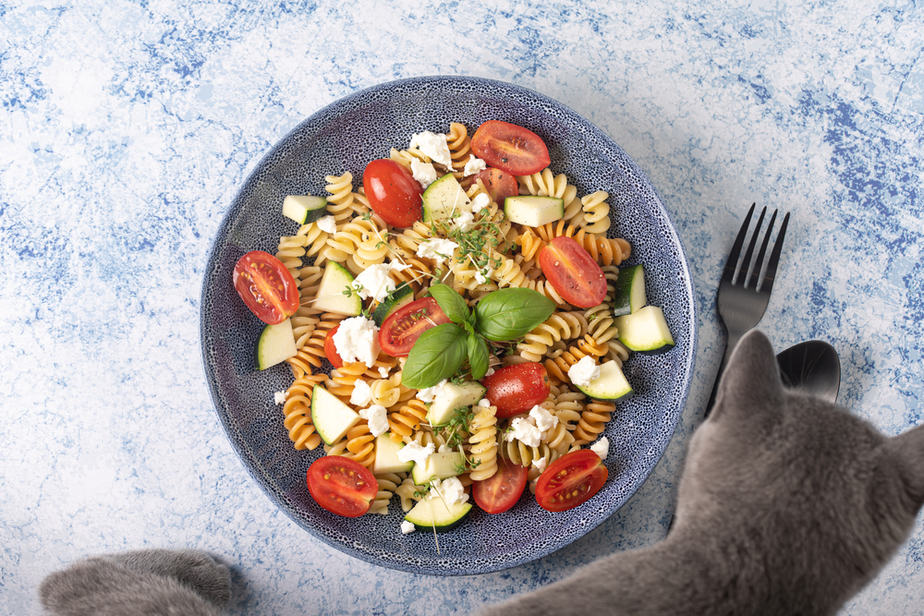
To sum up
In summary, cats can eat pasta only if it’s plainly boiled and served. This doesn’t mean you should let your furball feast on spaghetti or lasagna.
If your pet has made a habit of eating pasta, it’s time to reconsider her dietary choice. Pasta has almost no nutritional value to cats and should, therefore, not be included in their diet.
A few bites from time to time won’t cause harm, but keep in mind that excessive carbs and calories will negatively impact your feline’s health in the long run.
